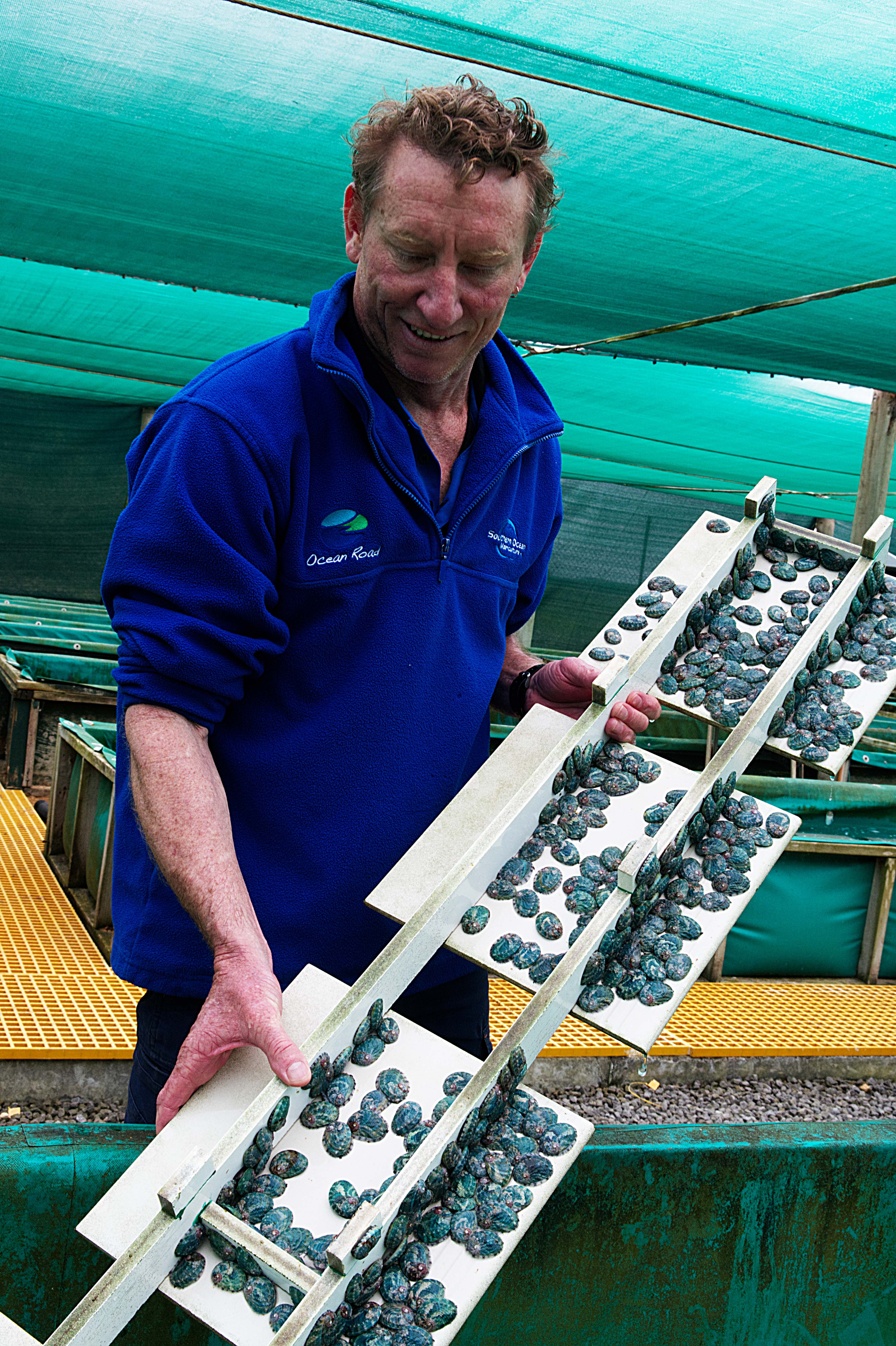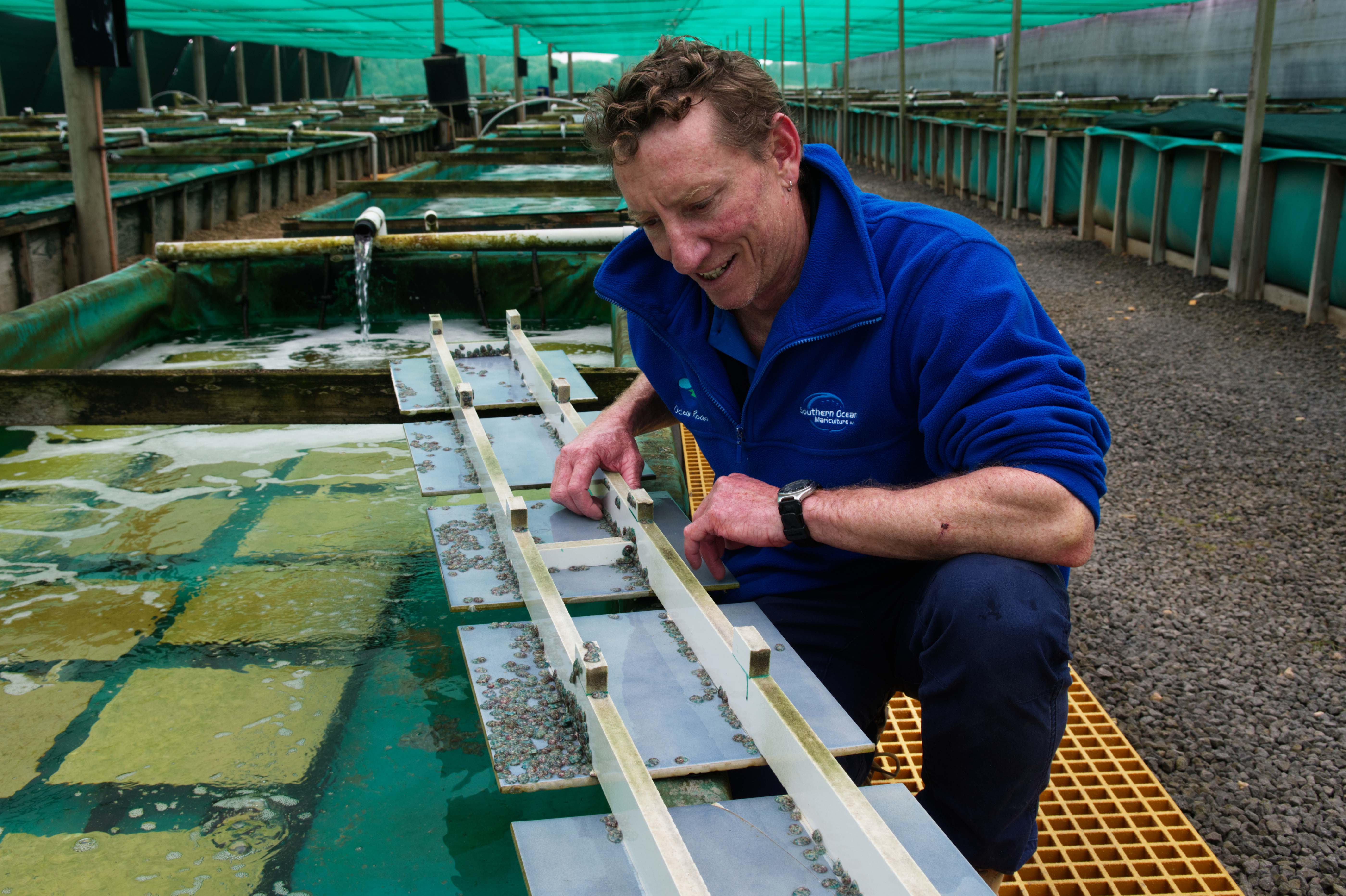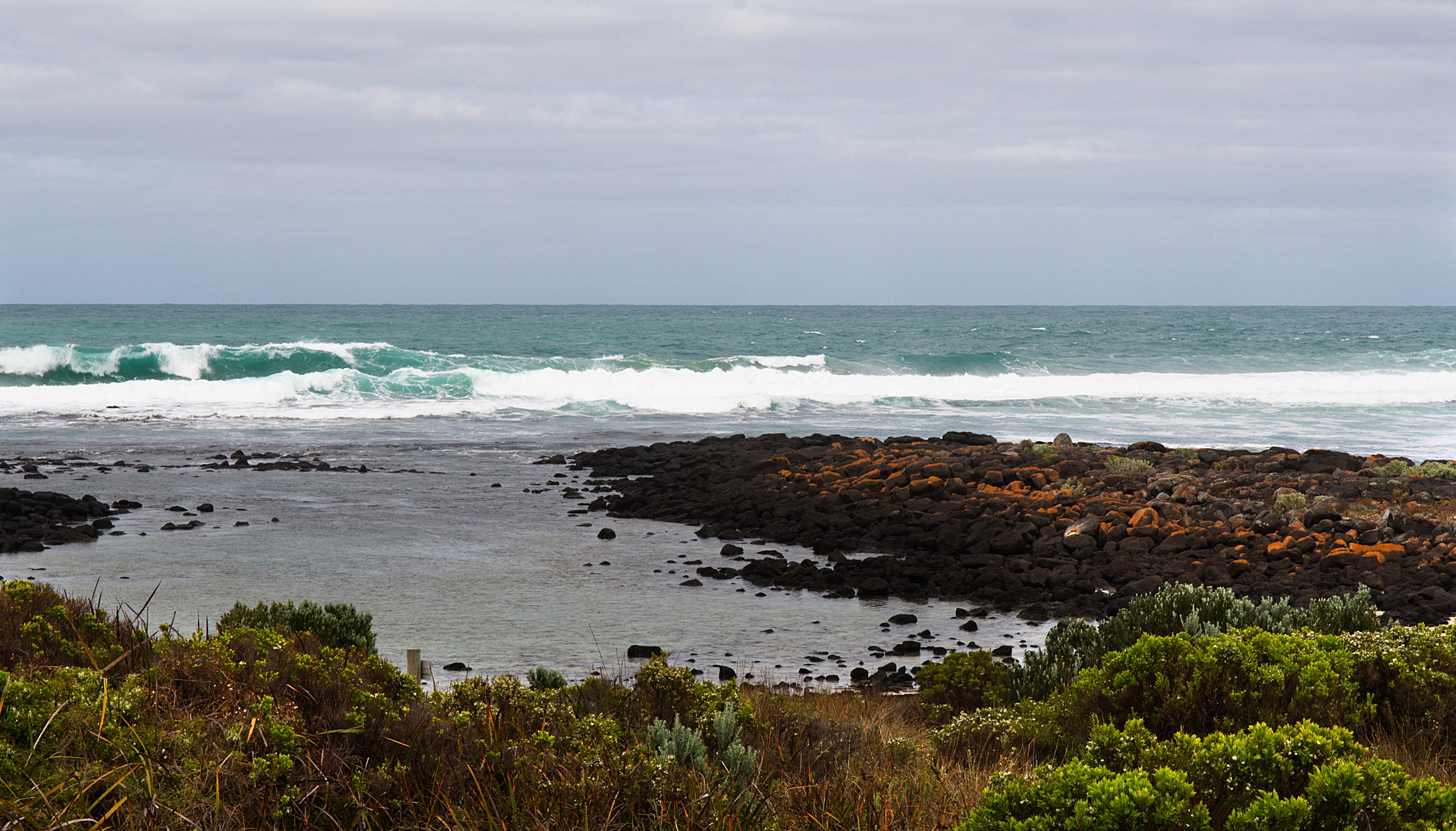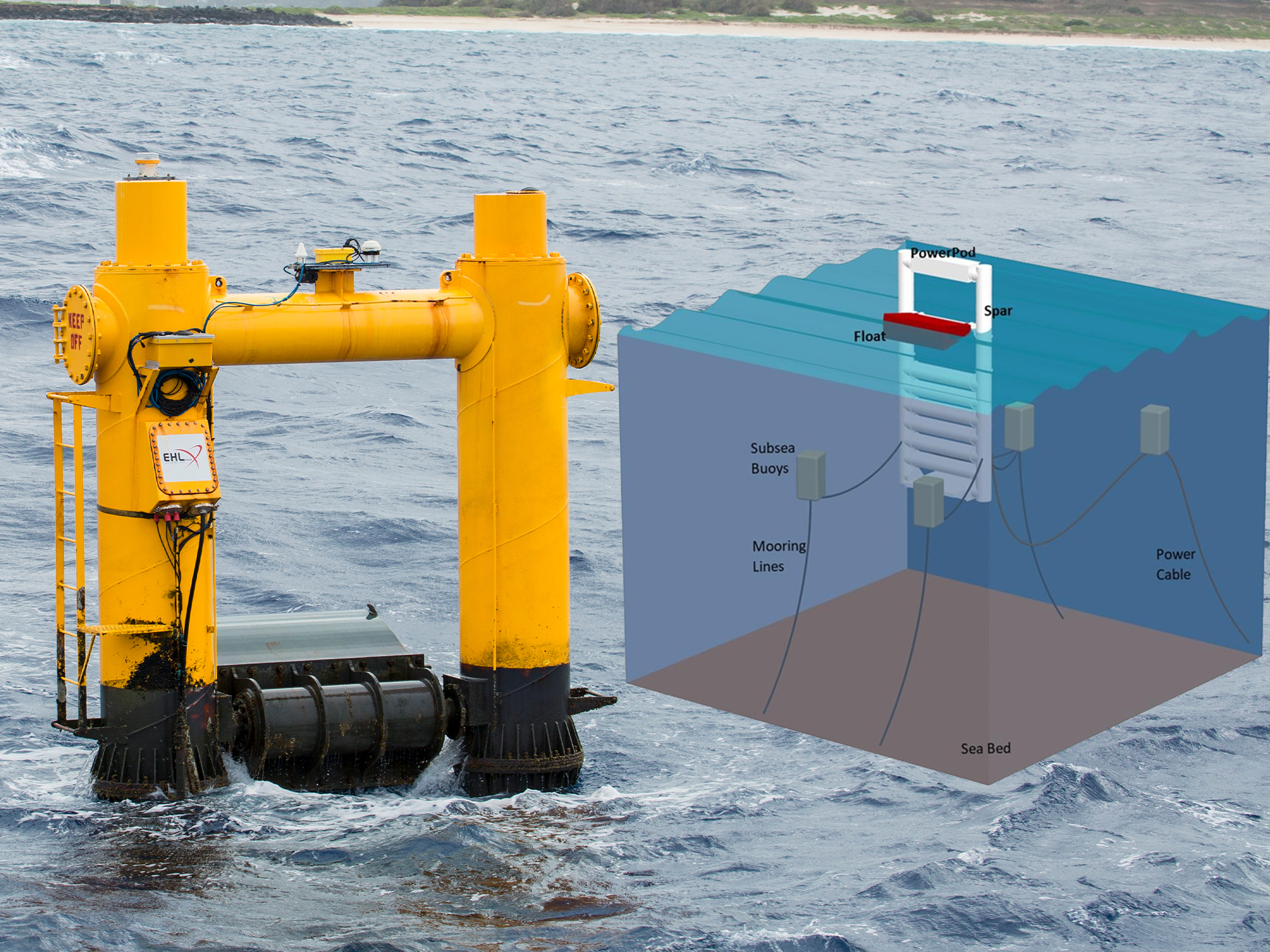Positive findings from an FRDC-funded ‘AquaGrid’ feasibility study have identified ocean energy microgrids as an option to power coastal aquaculture production and help decarbonise the sector.
Australia’s aquaculture sector will be among the first to add ocean-generated energy, along with solar and battery systems, to power the future of its operations.
Among those moving to invest in the potential of ocean energy microgrid options is Southern Ocean Mariculture (SOM), an abalone farming business on the outskirts of the Victorian coastal town of Port Fairy.

SOM has already invested in the largest solar array it could install without becoming a solar farm. Its 250-kilowatt array produces up to 200 kilowatts of solar power a day. Over the year, this averages to about 18 per cent of the company’s power needs. The $500,000 system paid for itself within three years with the assistance of government grants and rebates.
However, SOM General Manager Hamish Ebery says the solar supply is highly variable. “Nothing at night, and limited energy generation during shorter winter days and cloudy weather. In winter, it might provide only eight or 10 per cent of the power we need.
“But when you add wave (power) into the mix, it provides a consistent baseload to work from, generating power all day and night,” says Hamish.

Scalable options
After modelling 18 different technology and implementation scenarios for ocean energy, SOM selected two preferred options based on its specific needs and their geographic location.
The first option involves two 100kW Azura wave energy generators combined with solar, grid energy and back-up diesel power supply. Each Azura unit would produce more than 470,000kwh a year, based on analysed wave data.
This would provide SOM with about 70 per cent emission free power in combination with its solar system and would reduce greenhouse gas emissions by 55 per cent.
A second recommended scenario, or phase two, includes expanding the initial array to four 100kW wave energy generators. The combined systems would provide 100 per cent renewable power and reduce the company’s emissions by up to 96 per cent.
Based on the findings of the feasibility study, Hamish says the company has entered into a Memorandum of Understanding with Azura as its technology supplier to implement the first scenario, with two 100kW wave units, which could be scaled up at a later date.

It’s a plan that meets the company’s commitment to reduce its emissions as quickly as it can, securing sources of perpetual, reliable, affordable, secure and low-risk clean energy.
Hamish says he expects decarbonising will add value to the company’s product, Ocean Road Abalone, and create new marketing opportunities in sectors where low emission production and supply chains have become a priority.
From a capital perspective, ocean energy won’t come cheap. Each wave unit currently costs about $2 million with additional costs to deploy and commission the equipment. Despite the cost, modelling shows the initial investment could pay for itself in about seven years.
Site-specific evaluation
Azura Director Michael Byrne says the feasibility study for SOM was site-specific. In the case of SOM, Azura was able to incorporate important lessons from a previous, unassociated wave energy prototype trialled in the same area more than a decade ago.
Unlike the earlier test project undertaken by another developer, the Azura wave device will float on the ocean surface, not be placed on the seabed. This reduces the environmental impact across the life of the project and allows equipment to be easily decommissioned and removed.
The proposed location is on the ocean side of rocky reef immediately offshore from SOM’s operations. The area has a sandy sea floor, and is not used by commercial or recreational fishers, nor by divers.

“The Azura energy units have no external moving parts other than the float, and would be moored to the ocean floor, with most of the unit sitting just below the surface,” says Michael. “We are very aware of the need to respect the cultural heritage both at sea and on land within the area, coupled with the community’s expectations on low visual impact when deploying systems.
“The Azura systems capture the potential energy from both the vertical movement of water (heave) and the horizontal motion of waves (surge).” Michael says this captures energy more efficiently than both wind and solar systems.
Different technologies will be suited to different sites, with both wave and tidal technologies being developed by a range of national and international companies.
Accounting for climate impacts
FRDC Strategic Program Manager, Strategy and Innovation, Robert Smits says the feasibility study was designed to help connect the proven technological capabilities of ocean energy generation with industry needs.
“This project developed a methodology to help operators to ask the right questions if they are considering renewable energy microgrids.
“There are solutions out there that can lead to decarbonisation and technologies to invest in. But solutions need to be fit for purpose. There is not one technology or provider that will suit everyone.”
For FRDC, its co-investment in the AquaGrid feasibility study to “develop scalable alternative energy solutions for aquaculture” contributes to the key goals in its 2020-2025 Research, Development & Extension Plan.
This project fits within the objectives of Seafood Industry Australia and FRDC to strengthen the resilience of Australian aquaculture to a changing climate and help the sector decarbonise with economically feasible innovative solutions.
Related FRDC Project
2022-141: SIA early mover micro project – integrated wave energy microgrid design





